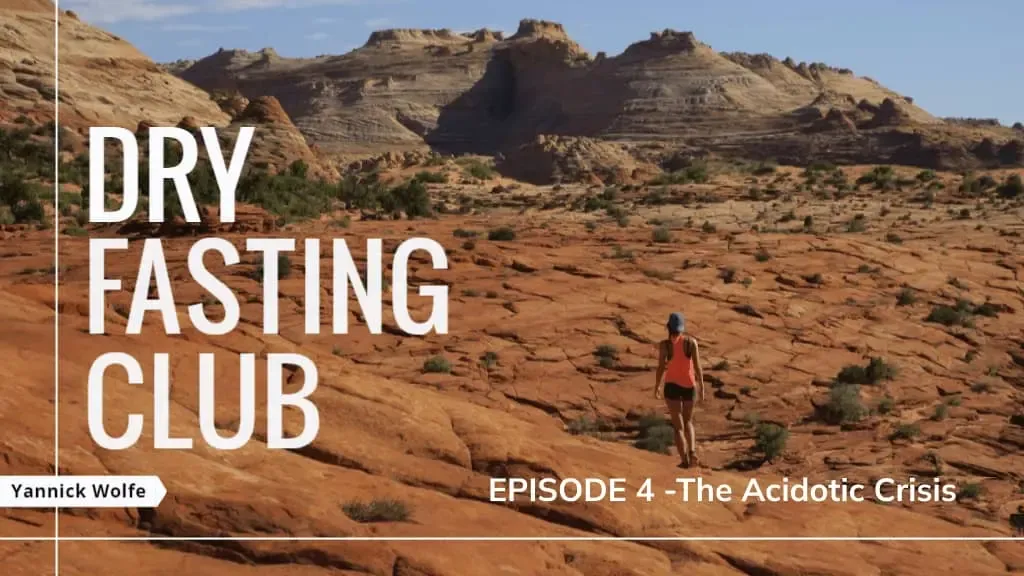Introduction
Today I would like to share with you a transcription of Q&A with dr Filonov.
Beggining
Q VB: Europeans know a lot about wet fasting, because many books have already been written on this topic, but almost nothing is known about dry fasting. You have devoted two books to it, and it’s wonderful that the translation of these books will soon be published in Italy.
Our website siberika – it is already receiving many questions from interested people. In particular, they are asking whether it’s possible to switch to dry fasting after a prolonged wet fast? For example, to start a 2 to 3-day fast after a 40-day wet fast?
A SF: No, that would be a great strain on the body, so it’s best to do the opposite. First, go on a dry fasting, and then continue with a wet fast.
Medical recommendations state the same, calling this method ‘combined fasting. You can start with a dry fast and continue with a wet fast, but you can never go from wet to dry. This will take away a person’s strength and create great stress, but won’t enhance the healing effect.
Wet Fast
Q VB: In the West, the term “wet fast” is understood differently than in Russia.
A SF: Yes, I know. In the letters I receive from the US, patients write that they go on 50-day fasts. Meanwhile, they drink juice, broth and/or herbal tea. Unfortunately, this has nothing to do with fasting.
The body works according to an all-or-nothing principle. Either eat properly, or fast. The word “fasting” has two meanings in Russia: either a person does not eat and drinks clean water, or he does not eat or drink water.
There are no other types of fasting. Even if we add lemon to the water, the body will perceive it as food. Cells do not absorb coffee or tea or herbs, as many people think, cell membranes are only set up for clean water.
If we add something besides water, it will become a diet, in which case the body is not restored, and gastric secretions continue to be produced. All of the above is a fasting diet, rather than fasting.
Q VB: Thus, there are only two options: fasting with water or without water?
A SF: Yes, the body works unambiguously: either one or the other.

Differences between Fasting
Q VB: In your opinion, how is the Russian school of fasting different from the Western tradition?
A SF: The difference is that we take the physiology of fasting into account. It has long been proven by studies that if we adapt to people’s weaknesses, we only make things worse. Our fasting is physiological. It complies with the laws of nature.
Do not try to make life easier for the patient by offering tea and juice, because it will have the opposite effect. It is necessary to work according to the rules, with regard for physiology. All of this has long been studied, all of this has been proven.
Acidosis and the most important restoration mechanisms do not occur during ‘fasting’ with these diets. In fact, they can destroy the body and cause dystrophy. This is not fasting.
The same thing happened during the siege of Leningrad: people did eat, but ate very little – and subsequently died of dystrophy. Proper fasting leads to nothing but a healing effect.
Diets, or absence of food intake, which are accompanied by the intake of decoctions, juices, broths, cause only dystrophic processes in the body. This is the only difference between the Russian and Western schools.
Psychological Factors of Fasting
Q VB: In addition, there is probably a psychological factor as well?
A SF: Yes, the psychological factor is that when we don’t eat anything, the body is easily restored. On the second day, gastric secretions are blocked, leading to an absence of appetite.
But when we add something, the blockage does not occur, and the appetite does not disappear. This causes additional stress.

Dry Fractional Fasting Method
Q VB: Sergey, you are the author of the dry fractional fasting method. What is the difference between your technique and ordinary dry fasting?
A SF: Unfortunately, due to poor ecology and the negative impact of the environment on the human body, modern people are becoming weaker with each generation. A hundred years ago, it was not difficult for a person to go through 40, 50 or 60 days of fasting with water.
But today everything has changed. It is very difficult for a modern person to go through the whole fasting treatment period at once. That’s why we have developed a gentle method that is aligned with the current adverse environmental conditions.
Benefits of Fractional Fasting
Q VB: What fasting period are you talking about?
A SF: We have developed a fractional 11-day dry fasting method. Before us, Dr. Voitovich in Belarus had proven that it is difficult for a modern person to withstand the normal wet fasting period (40-60 days).
But he made an interesting discovery: it is much easier to conduct if you divide fasting into three 20-day stages. If less than 2 months pass between fasting stages, and if a person follows a certain diet, then the duration of all the stages can be summed up.
In this case, the effect will be the same as from a 60-day long fast. This is true for dry fasting as well.
With regard for this information, we have begun to offer fractional fasting. The first stage lasts 5 days, and recovery follows. The next stage lasts 6 days, so it adds up to an 11-day fast. It’s much more comfortable and easier psychologically and physiologically.
Q VB: This means that, as a rule, you conduct a 5-day fast, and then a 6-day fast?
A SF: It depends on the weight of the person, on one’s illnesses and the preparation. We select the term individually for each patient.
End of Part 1
The interview was recorded in 2018 for the Siberika project. The Siberika project aims to translate, publish,and distribute books by Russian thinkers and scientists unknown to Western readers.
Fasting 101
Q VB: Tell us more about the term of dry fasting. For how long can a person fast at home? How long can one fast under the supervision of an expert doctor?
A SF: In our experience, the length of the fasting period depends on a person’s condition and on the general state of health. With serious diseases, fasting at home is not recommended for more than 3 days.
If a person is not ill, if he wants to fast for prevention and recovery, then the period is 5 days. I do not recommend exceeding the 5-day period for a home fast.
(NOTE:However, under the supervision of an experienced doctor, a dry fast may last between 7 and 11 days, depending on the condition and the state of health)
Preparation
Q VB: Is preparation required?
A SF: Certainly, preliminary preparation is required in order to avoid side effects. A dry fast is similar to surgery. Just as surgery requires preparation, so does dry fasting. There should be no concessions, no laziness involved. I explain all of this in my books.
Q VB: What should one do if menstruation begins during dry fasting?
A SF: It’s okay for a woman to come into contact with water. The most important thing during dry fasting is to prevent water from entering the mouth. You can wash your face and body.
Q VB: Enemas are usually used during wet fasting. You don’t use them with dry fasting. What is the reason?
A SF: Everything is very simple. During wet fasting, the water cleanses the body of toxins, in this case the enemas are useful.
During dryfasting the absorption of toxins doesn’t happen. It happens only in the presence of water. If we gave a enema during dry fasting, it would cause heavy intoxication.
With dry fasting, another principle applies: the body is cleansed by increasing the internal temperature, which destroys toxins.
During a dry fast, each cell functions like a small reactor. It includes a powerful temperature reaction, and the body cleanses itself in this manner.
Acidotic Crisis
Q VB: You discuss the first and second acidotic crises in detail in your books. Tell us about it. Is there always a second acidotic crisis?
A SF: The first acidotic crisis occurs between the 1st and 3rd day in 90% of the people. It signifies the transition of the body to endogenous nutrition. During a water fast, this happens on day 4-10, and during a dry fast – on day 1-3.
That is, in the absence of carbohydrates, the body switches to the breakdown of fats, and when ketone bodies accumulate as a result, the first acidotic crisis occurs.

Note:
This critical transition, dubbed the “acidotic crisis,” occurs as a result of the body’s adaptation to endogenous nutrition. After the crisis the acidotic shift decreases, blood sugar levels rise, well-being increases and the patient can subsequently endure fasting with ease.
People conducting a dry fast simply do not notice it. But with wet fasting, there may be a deterioration of well-being and a smell of acetone, which do not usually occur during a dry fast. It happens more gently, comfortably and quickly. The more often a person fasts, the sooner the crisis occurs.
The second crisis is therapeutic rather than acidotic. Blood clotting and maximum concentration of certain hormones usually happens on day 7-12. During this therapeutic crisis, the temperature rises and chronic diseases worsen.
It is at this time that the therapeutic effect reaches its maximum. It manifests itself in different ways for everyone, but typically the best and most powerful healing effect occurs by day 9.
The exact time depends on the patient’s body weight, fasting experience and other individual characteristics.
Cancer
Q VB: Can dry fasting help cure cancer?
A SF: In my practice, there have been cases when the first and second stages of cancer were cured. In one case, kidney cancer was discovered in a woman accidentally during an examination. She came to our Altai clinic and went through a fasting course.
During this course, her temperature rose to 40 degrees ( 104.0 °F ), she was as red as a tomato. But she came out of the fast only after her temperature had normalized.
She was subsequently examined, and the doctors no longer supported the cancer diagnosis. The doctors decided that the first diagnosis was erroneous
Unfortunately, people turn to us too late, after chemotherapy, when the entire immune system is destroyed, when the life forces of the body are close to zero. Unfortunately, fasting is not effective in such cases.
What about cirrhosis?
Q VB: Is fasting possible in case of cirrhosis with ascites?
A SF: Blood thickens during dry fasting. From one point of view, it is very useful for the body, since there is a concentration of hormones and immune cells. On the other hand, it has its own side effects, since it causes an overload of the body.
Cirrhosis is the final stage of liver damage. Our portal vein goes through the liver, and during a dry fast, blood clotting increases and the body is excessively burdened.
Therefore, fasting is absolutely out of the question with liver cirrhosis, not even a wet fast. There are no miracles.
Q VB: So, even a wet fast is unadvisable if a patient presents with liver cirrhosis?
A SF: Yes, I advise against it. Although there is a known case when doctor Orlova had cured herself of cirrhosis by a 30-day fast.
But she did not have ascites; ascites prevents the liver from functioning, venous blood cannot pass through it. In this case, the liquid part of the blood enters the abdominal cavity.
Crucial Point of dry-fasting
Q VB: What do you think are the most crucial points in dry fasting? What should we heed attention to?
A SF: The main criterion for coming out of a dry fast is the heart rate. If a person’s heart rate is over 120 beats and he or she feels very unwell, it is the most important criterion for stopping the fast.
It means that there is an intoxication of the body, and the body can not cope. In this case, you must immediately stop the fast.
Q VB: A translation of your book on dry fasting will soon be published in Italy. What would you wish to our Italian readers?
A SF: We have learned this method from nature itself. Of course this is not a panacea, but with proper preparation, this method has a very powerful therapeutic effect. Patients come to me with ankylosing spondylitis and rheumatoid arthritis, and they obtain good results.
In addition, this is the best cancer prevention known to date. It is better to conduct a fast as prophylaxis than to treat cancer later on. This is the most effective, simple and natural method under modern conditions, given our poor ecology.
Advices
Q VB: What advice would you give to Italian doctors?
A SF: First of all, I would like to wish the critics to first test this method on themselves and learn about its effectiveness – and only then judge it.
Secondly, fasting has to be carried out in accordance with certain rules that are confirmed by experience. There’s no need to add juices or herbs. All or nothing – either fast for real or do not fast.
Thirdly, if a doctor wants to conduct fasting treatments, he must use it on himself first, otherwise, there will be no experience or knowledge. Only after going through a fast or even curing yourself, can you calmly and honestly look into your patients’ eyes.
Massage of the organs
Q VB: In your dry fasting practice, you always combine fasting with massage of the internal organs. Why?
A SF: We become less healthy with each passing generation. Fasting alone is not enough now. I started fasting 30 years ago. Now I notice that fasting is becoming less effective with every decade.
We try to help the body to achieve the maximum effect of fasting. Including honey massages, Old Slavonic practices, we help during fasting and during the subsequent adaptation period.
We try to restore the mobility of the spine and the internal organs, we attempt to relax a person’s muscular system as much as possible, so that it’s easier for the body to work. The more complex the treatment, the greater the effect of fasting.
Fasting in Russia now
Q VB: Thanks to the work of Professor Nikolaev, wet fasting was very popular in Russia in the 1970s. What is the current situation in Russia with dry and wet fasting?
A SF: There are ups and downs in the life of any treatment technique. The interest in fasting had peaked following the release of Professor Nikolayev’s book “Fasting for Health.” The same thing happened with Suvorin, the forefather of fasting in Russia.
However, under-trained doctors have gradually damaged this method’s positive image. Now, it seems that there is once again a surge of interest in fasting in our country.
Increasingly more people come to our center, and a lot of people have begun to come from abroad. Perhaps they have not been able to find anything similar at home, they began to search for information about other countries and found us.
The Japanese scientist Yoshinori Ohsumi, who played a major role in promoting fasting, received the Nobel Prize for discovering the cellular autophagy mechanism. This fact has played a large role in promoting an interest in fasting, not only in Russia, but throughout the world.
Benefits of dry over wet fasting
Q VB: Please explain the benefits of dry fasting over wet fasting in a nutshell.
A SF: In fact, everything is very simple. Water means life not only for humans, but for all sorts of viruses, bacteria, and the like. I had patients who fasted for 20-30 days, and parasites emerged on day 30. That is, water allows for the existence of bacteria and viruses.
Dry fasting is a tough technique. Only the strongest structures survive without water. Dry fasting can be equated with surgery, with nature itself as the surgeon.
Under such harsh conditions, only the strongest will survive and produce the strongest offspring. Modern man has a lot of ‘dead’ water inside. Under harsh conditions, each cell begins to produce the best ‘live’ water for itself.
Therefore, this is the only technique out of all types of fasting that entails the replacement of ‘dead’ water with ‘live’ water.
In addition, blood thickens and immunity increases manifold during a dry fast. The level of anti-inflammatory hormones also rises.
All chronic inflammation is associated with water. When a person undergoes wet fasting, inflammation decreases very slowly. Respiratory diseases and the flu retreat if we fast on water for 4-5 days.
With dry fasting, on the other hand, patients recover from these diseases in just 2 days. In this case, the timing and impact on the body are more severe. Therefore, this type of fasting requires very careful preparation.





